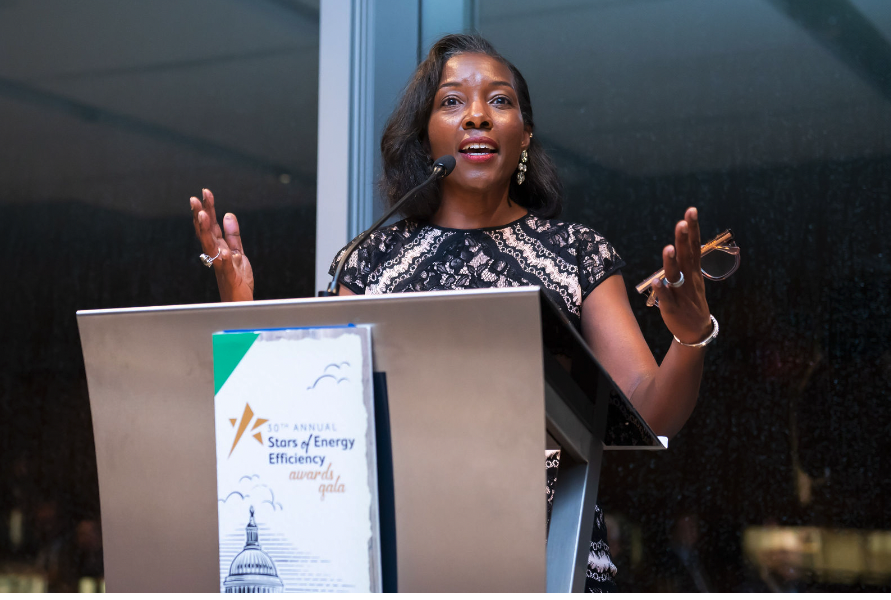In California, Building Energy Efficient Dreams
Let's Save Energy
Alliance to Save Energy's Blog

California is known around the world for its beautiful beaches, abundant sunshine and unique culture. But did you know that the state is also known for being one of the most energy-efficient states in the country and among the lowest in per capita energy consumption?
We’re heading to Los Angeles on Feb. 23 with a bipartisan group of congressional staff to learn from local leaders and experts in energy efficiency. As part of the trip, we’ll be holding a Policy Perspectives briefing in downtown LA to hear from energy efficiency innovators in the region. We hope to see you there.
Here are a few things that California is doing to turn energy efficiency dreams into reality.
Doubling Down on Energy Efficiency
Passed in 2015, the Clean Energy and Pollution Reduction Act established new energy efficiency and renewable electricity targets to support California’s long-term climate goal of reducing greenhouse gas emissions by 40 percent by 2030. This will be achieved in part by increasing the use of renewable energy resources to 50 percent by 2030. The California Energy Commission (CEC) recently announced the Existing Building Energy Efficiency Action Plan to double energy efficiency savings for both electric and natural gas utilities by the year 2030 as required by the law. The CEC plan found that much of the untapped energy efficiency potential to meet those targets could be achieved by improving the energy efficiency of existing buildings, as well as appliances and other devices used in those buildings, helping the state meet the ambitious goals mandated in law. Because buildings account for approximately 40 percent of U.S. energy use, efficiency programs like these make sense.
The Stars Align in L.A.: Mayor Garcetti Advances Building Efficiency
According to the city of Los Angeles, the single greatest source of greenhouse gas emissions to be found there comes from the built environment. Four percent of buildings in L.A. account for 50 percent of the total building energy use. Helping to lead the way in building energy efficiency the Los Angeles City Council recently unanimously adopted the Existing Buildings Energy and Water Efficiency Ordinance. As part of Mayor Eric Garcetti’s Sustainable City plan, the 2017 ordinance is geared toward reducing L.A.’s building energy use 30 percent and water use 25 percent by 2035. This will be done in part by requiring privately owned buildings in Los Angeles that are over 20,000 square feet and buildings owned by the City that are over 7,500 square feet to benchmark their annual energy and water use with ENERGY STAR Portfolio Manager. Building owners can win with benchmarking because it makes it easier to track and assess the energy performance of the property, allowing the opportunity for owners to manage utility costs and target areas to improve. If followed through with efficiency improvements, properties should have greater asset value and should command higher rents. Starting in 2019, all buildings covered by the plan will be required to achieve certain efficiency targets or perform audits and retro-commissioning on a 5-year cycle determined by the properties assessor.
Building Momentum
Buildings consume a lot of energy. California, home of nearly one in eight Americans, has for years been a leader in building energy efficiency. The state’s Building Energy Efficiency Standards, updated every 3 years, lower energy costs, reduce greenhouse gas emissions, and make buildings more comfortable. These standards ensure that builders use the most energy-efficient technologies and construction techniques. Significant 2016 improvements to the residential standards include higher efficiencies for things like attics, walls, water heating and lighting. The 2016 standards will increase the cost of constructing a new home by about $2,700, but will save $7,400 in energy and maintenance costs over 30 years. These single family homes will use about 28 percent less energy for lighting, heating, cooling, ventilation, and water heating than those built to the 2013 standards. In 30 years, California, by setting ambitious standards goals will realize savings in energy enough to power 2.2 million homes and will have eliminated the need to build 12 additional power plants.
Lighting the way
As of January 1, 2018 the CEC implemented first-in-the-nation energy standards for light-emitting diodes (LEDs) and track lighting, two years ahead of a new federal light bulb standard. The standards are expected to save Californians $4 billion in aggregate over the first 13 years and conserve enough electricity to power the equivalent of about 400,000 average homes.
ENERGY STAR rated LEDs use about 75 percent less energy and last up to 25 times longer than the traditional incandescent bulbs they replace. The new standards for LEDs include energy efficiency and quality improvements such as a minimum lifetime requirement of 10,000 hours, which is equal to a ten year life in a typical home. The lifetime savings can range from $4.50-$12.50 per bulb and should continue to be greater as purchase prices continue to drop. The Energy Commission estimates that more efficient track lighting, often used in commercial sites (16 million bulbs in California), can save Californians almost $250 in reduced energy and bulb replacement costs when averaged over the next 11 years. That’s some serious savings!
Dreams can become reality. Just ask California!
STAY EMPOWERED
Help the Alliance advocate for policies to use energy more efficiently – supporting job creation, reduced emissions, and lower costs. Contact your member of Congress.
Energy efficiency is smart, nonpartisan, and practical. So are we. Our strength comes from an unparalleled group of Alliance Associates working collaboratively under the Alliance umbrella to pave the way for energy efficiency gains.
The power of efficiency is in your hands. Supporting the Alliance means supporting a vision for using energy more productively to achieve economic growth, a cleaner environment, and greater energy security, affordability, and reliability.



